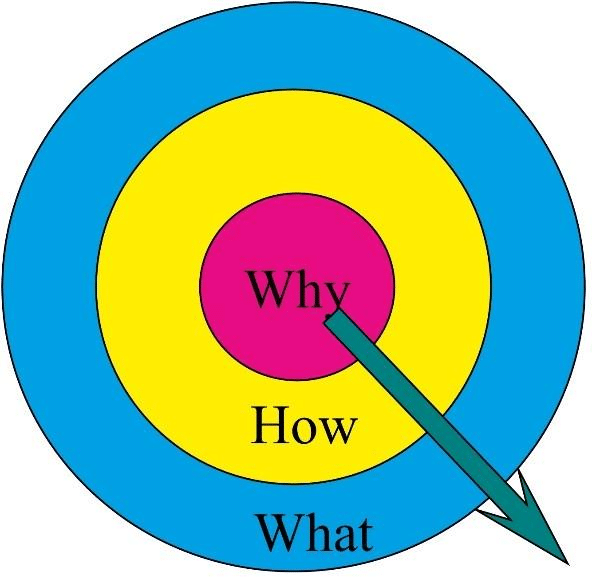In this Article...quick links
How many times have you sat through a presentation that contains sound arguments, compelling statistics and logical conclusions? Probably quite a few times. But how many of those presentations have been engaging, memorable – or even interesting?
Now think about any TED Talks you may have seen. Were they boring like many of the business presentations you’ve sat through? Unlikely, and why is that? Well, for one thing, great presenters don’t use slides crammed with bullet points and words, charts and tables, like you see in a typical business presentation. But it’s not just about the slides.
Brilliant presenters, like TED talkers, use storytelling! Giving presentations that evoke emotion, create drama and compel people to take action.
Here’s how to emulate them:
Tip #1. Tell a story
If you want to present like a pro then think of how you can turn your business presentation into a story.

Chris Vogler, is an acclaimed American writer and author of The Writer’s Journey. He concludes that every great story, regardless of how old it is or what it’s about, follows a similar structure that can be broken down into seven key stages. He references heroes and villains, but you can easily substitute these for a brand, product, person or the competitive landscape.
Stage 1. Setting up the hero in his or her ordinary life. You have to show what is normal for your hero, so that when they are faced with a challenge or a problem, the reader or audience can see how different this is to their daily life.
Stage 2. The call to adventure. The hero is presented with a challenge or problem that they must solve or undertake. We learn what is at stake if the hero fails.
Stage 3. Accepting the challenge or committing to the adventure. Here we see the hero leave their daily life to start on the journey that will form the main part of the story.
Stage 4. Tests, friends and enemies. Usually, the hero will meet new people along the way. Some will be good, others bad. Some will try to stop the hero from achieving his or her goal.
Stage 5. The ordeal. This could be a fight, a time when we think the hero may fail, or when the hero refuses to give up the challenge, when everything around them is going wrong.
Stage 6. The reward. The hero achieves his or her goal.
Stage 7. The road back and the return to ordinary life. How has the hero’s life changed as a result? Is it better? Have they learned an important lesson?
Think about every great story you have ever read or a movie that you have particularly enjoyed, and you should be able to easily recall each of the key stages.
Now it won’t be possible, or indeed necessary, to go through each of these seven stages in a typical business presentation, but we can use these stages as a guide to help us create powerful stories for our business presentations. All you need to do is replace heroes, friends and villains with innovations, partners, colleagues, your team, competitors, the market conditions and so on. Once you start to think like great presenters do, in storytelling terms, your presentations will never be the same again.
Tip#2. Humanise your story
People are always at the heart of great stories, so here’s an example of how you can turn a presentation into a story. We first featured this in a previous blog about strategic storytelling, but it’s worth including again here to illustrate the point.
Let’s say you work for an FMCG company and you need to present a proposal to your Board to eliminate the use of unsustainably sourced palm oil from all of your products because your brand’s reputation is under increasing scrutiny and sales are starting to slide. There are two ways you could go:
1. The conventional approach, focusing your presentation on:
- Why and how sales have declined
- The alternatives to palm oil
- Logistical details and profitability of each alternative
- The different phases of the switch-over
2. The strategic storytelling approach using three key events:
- The Conflict – Your presentation unfolds with a moving story about a farmer on an Indonesian island who fell prey to a crippling respiratory illness because of the large swathes of native forest that were burned to clear land for oil palm farming. His illness meant he couldn’t work and provide for his family and before too long he lost all his land. He is among thousands of other people, as well as threatened animals such as orangutans, who are dying prematurely as a result of air pollution from the fires.
- The Journey – Your joint venture with the company that owns these oil palm farms is being battered by bad press as more people around the world become aware of the terrible consequences of palm oil farming. You now need a way to salvage the situation before your brand’s reputation is damaged forever.
- The Solution – Switching to alternatives like sunflower and soybean oil, sourced sustainably, could improve brand perception, customer loyalty and sales. Setting up a fund to rehabilitate Indonesian farmers and protect wildlife who have suffered from mass deforestation will further your brand’s reputation.
Which presentation approach would be more likely to persuade you – the conventional one or the strategic people-centric storytelling approach adopted by great presenters? Even a subtle shift in focus within your business presentations will make a huge difference to how engaged your audiences will be. And the more engaging you are, the more persuasive and inspiring you’ll be.
Tip# 3. Understand what’s at the heart of your story
When we think of great presenters one person in particular inevitably comes to mind, Steve Jobs. The Apple way of presenting changed the communication landscape. It wasn’t just that Jobs turned a presentation into a story, it was also the way that Apple constructed their own marketing story.
American author, Simon Sinek, another great presenter, has created a simple tool that he calls ‘The Golden Circle’ to illustrate how Apple’s approach to marketing and communication differs from most brands. He looks at 3 core principles – What? How? and Why?
Sinek argues that most brands and marketers approach their story from the outside in. What is it that we do? How do we do it? Why do we exist? Please buy our product! If you follow the logic of this approach the answer to Why almost always becomes ‘to make a profit’. Here’s an example.
‘We make great cars. They are affordable, economical to run and good for the environment. We want to be successful. Please buy one.’
In the case of Apple, Sinek believes they were among the first to look from the inside out when they created their brand and marketing ethos. Why do we exist? How do we do it? What is it that we do? Please buy our product.
His Apple example goes as follows;
‘In everything we do we believe in challenging the status quo. We believe in thinking differently. Our products are beautifully designed, simple to use and user friendly. We just happen to make great computers. Please buy one.’
So, when you think about telling your story – be that of yourself, your products or services, your brand or company, make sure you are able to answer the What (or in today’s parlance, your Purpose), before you start to explain the How and the Why.
Tip#4. Learn how to tell your story.
Now that you have a great story to tell you need to make sure that the audience will listen. Your delivery, your storytelling if you like, is just as important as the story itself when you’re looking to become a great presenter.
Julian Treasure is a highly acclaimed British author and speaker on sound and communication styles. He believes there are 4 cornerstones that should guide the way we speak to people so that they will listen. He calls this HAIL – To greet or acclaim enthusiastically.
Honesty, Authenticity, Integrity and Love.
Honesty – be clear and straight with people. Don’t use jargon.
Authenticity – be yourself.
Integrity – be your word. Do what you say you will.
Love – wish people well. Be kind.
If you think of people with a positive presence, or command of the room, famous people, or friends or colleagues you admire, then it’s likely that these HAIL qualities are all qualities that you associate with them.
Treasure also lists 7 deadly sins of speaking that turn people off and should be avoided at all cost:
- Gossip
- Judging
- Negativity
- Complaining
- Excuses
- Exaggeration
- Dogmatism
And in Julian Treasure’s TED Talk he also demonstrates how to use your vocal toolbox to add drama and emotion to your speech – it’s definitely worth a watch.
Great presenters also introduce other tactics and delivery techniques to engage with the audience, provide momentum and punctuation, and increase emphasis. In other words, as we say, they will be speaking with gravitas, and the tips and tricks they use will include:
- Moving with purpose at certain points within the presentation to add energy to the story.
- Non-verbal cues and positive body language to draw the audience into the presentation.
- Using gestures for emphasis and to bring the story to life.
- Maintaining strong eye connection with the audience.
- Pausing to change gears with their voice and create anticipation amongst their listeners.
- Smiling to show confidence.
- Being their authentic self.
- Always, always, being on time.
- Knowing when to stop talking.
In our view there is no excuse for dry, boring business presentations. So next time you have to prepare a business presentation why not try to emulate great presenters and turn your data into a compelling story.
Become a great presenter and improve your storytelling
If you’re looking for help on how to develop compelling, audience focussed presentations, for yourself, or your team, our personalised training or coaching that is tailored to your business, is just what you need!
For nearly 20 years we have been the Business Presentation Skills Experts, training & coaching thousands of people in an A-Z of global blue-chip organisations – check out what they say about our programmes.
To find out more, click on one of the buttons below:

Belinda is the Co-Founder and Managing Director of SecondNature International. With a determination to drive a paradigm shift in the delivery of presentation skills training both In-Person and Online, she is a strong advocate of a more personal and sustainable presentation skills training methodology.
Belinda believes that people don’t have to change who they are to be the presenter they want to be. So she developed a coaching approach that harnesses people’s unique personality to build their own authentic presentation style and personal brand.
She has helped to transform the presentation skills of people around the world in an A-Z of organisations including Amazon, BBC, Brother, BT, CocaCola, DHL, EE, ESRI, IpsosMORI, Heineken, MARS Inc., Moody’s, Moonpig, Nationwide, Pfizer, Publicis Groupe, Roche, Savills, Triumph and Walmart – to name just a few.






